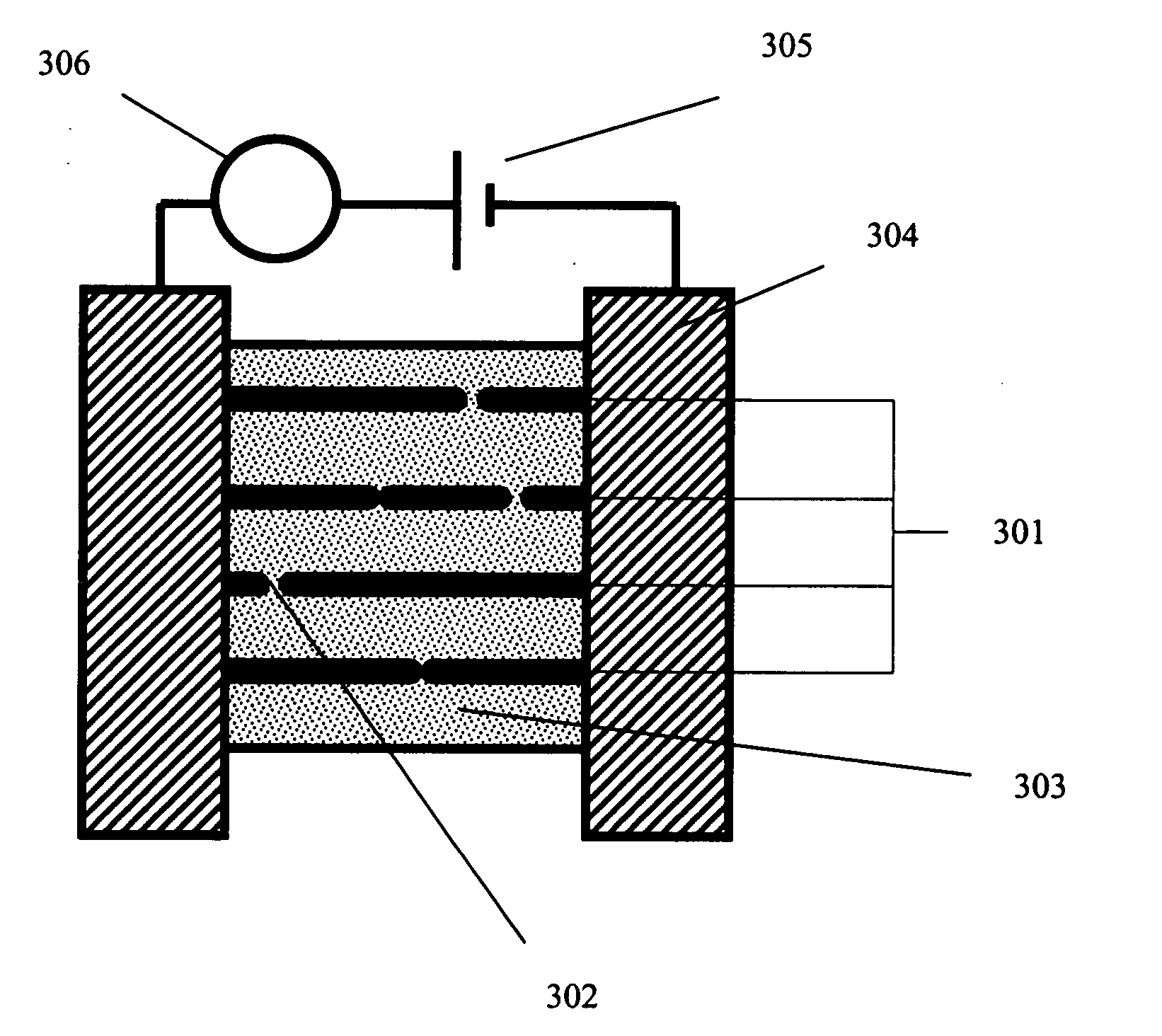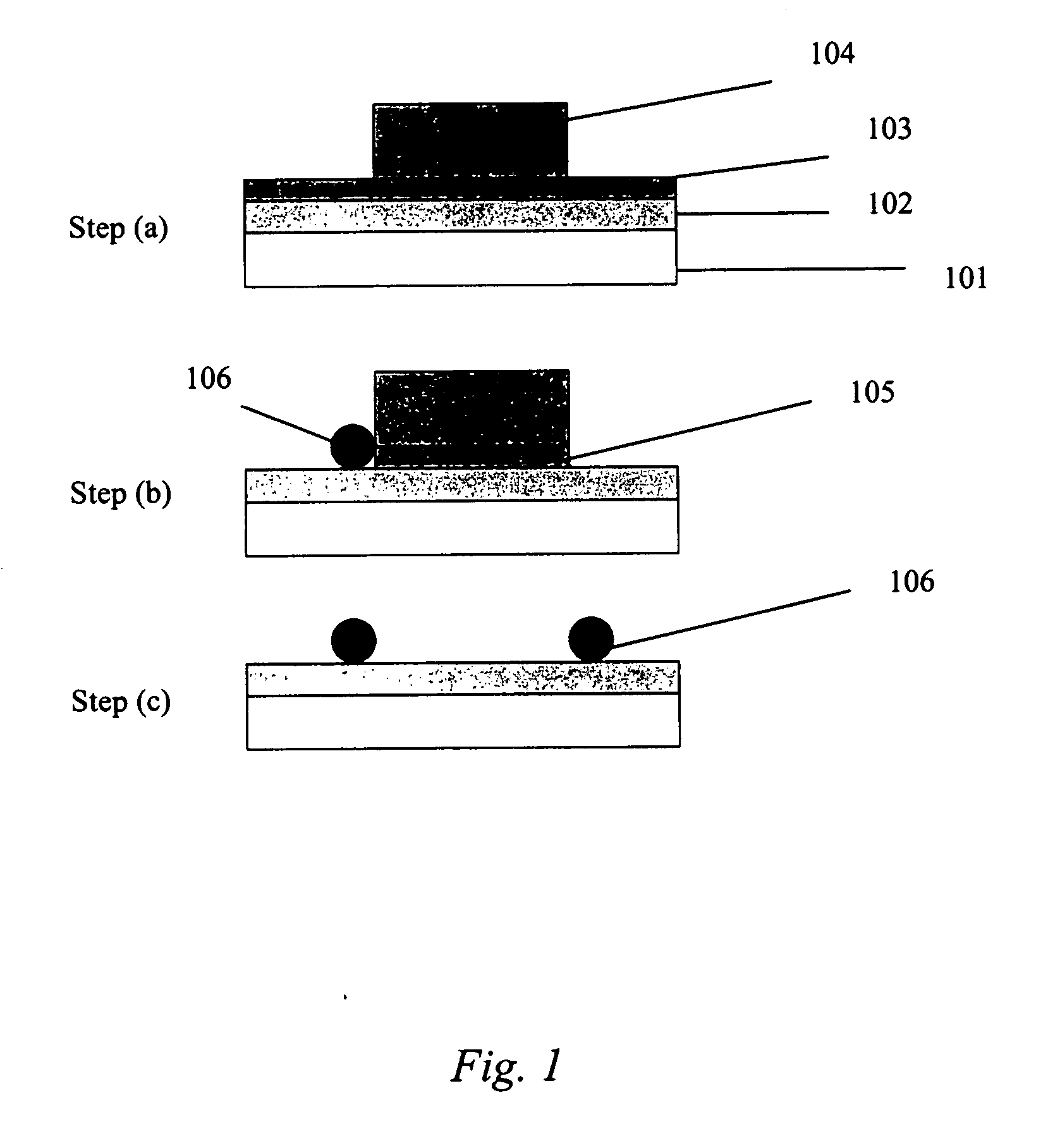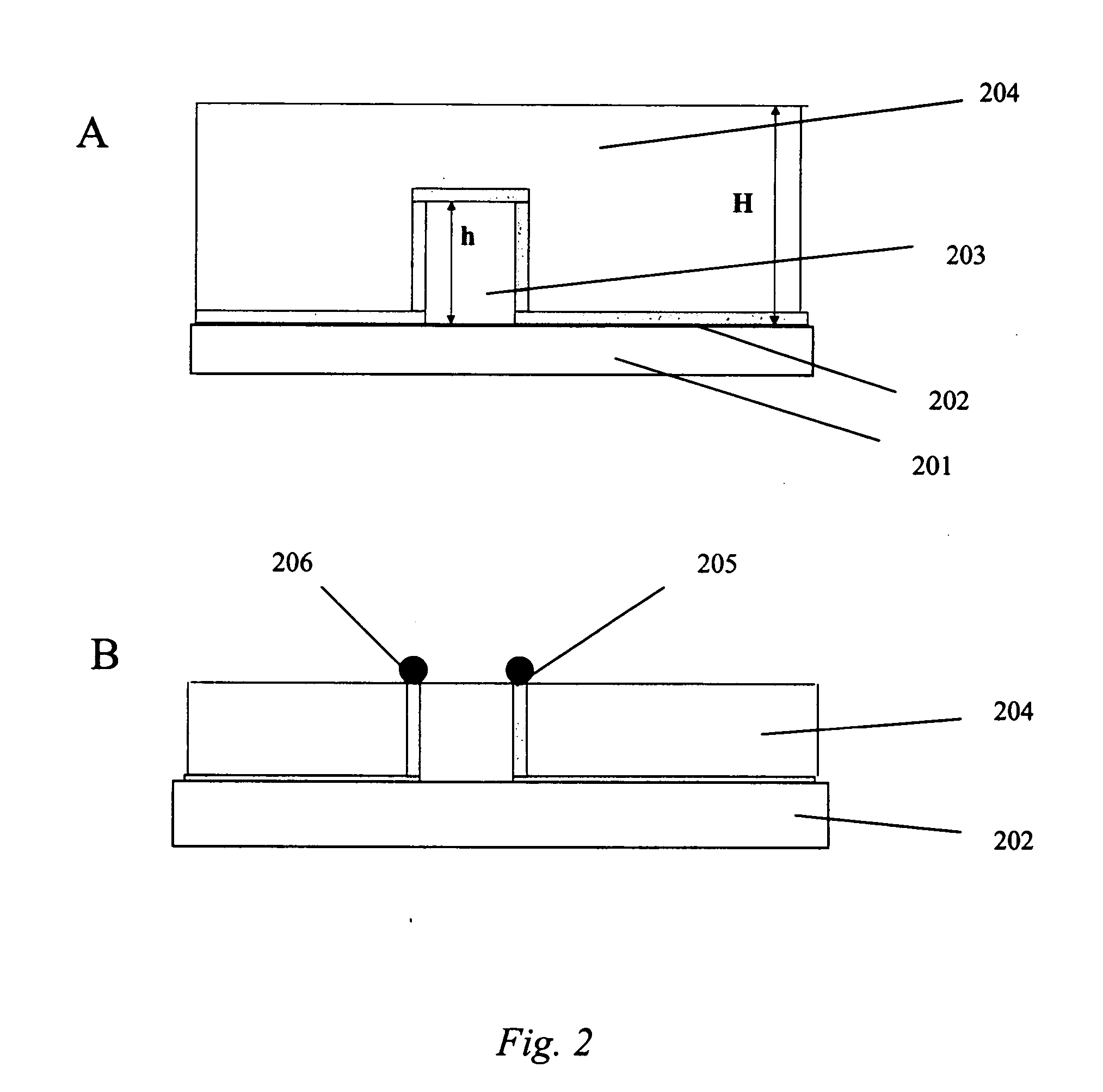Continuous-range hydrogen sensors
a technology of hydrogen sensors and continuous range, applied in the field of continuous-range hydrogen gas sensors, can solve the problems of limited dimensions and in this embodiment limited
- Summary
- Abstract
- Description
- Claims
- Application Information
AI Technical Summary
Benefits of technology
Problems solved by technology
Method used
Image
Examples
example 1
[0058] This example illustrates the electroplating of Pd—Ag nanoparticles onto a patterned substrate to make a continuous-range H2 sensor in accordance with some embodiments of the present invention.
[0059] First, an aqueous Pd—Ag plating bath (solution) was made comprising 2.5 mM PdCl2, 0.5 mM AgNO3, 0.05 M NaNO3, 0.05 M HCl, and 2 M NaCl. The ratio of Pd to Ag in this bath is 5:1. The order in which the bath components are mixed can be important. Accordingly, the components were mixed in the following order: 1) AgNO3→2) NaNO3→3) water→4) HCl (solution should be milky in appearance due to the formation of AgCl)→5) NaCl until the solution becomes clear→6) PdCl2.
[0060] Next, an electroplating process was carried out using chronopotentiometry (constant current process) in a three electrode system to electrochemically deposit nanoparticles onto a patterned Ti substrate. Conditions for electroplating were as follows: −300 μA for 5 seconds (nucleation step), then −20 μA for 450 seconds ...
example 2
[0061] This example illustrates how a continuous-range hydrogen sensor of the present invention can be used in the sensing of hydrogen gas.
[0062] The results of such a sensor measuring the hydrogen concentration dissolved in oil are shown in FIGS. 12A-12D. FIGS. 12A-12D show the response of the hydrogen sensor to hydrogen dissolved in oil at different concentrations (22 ppm, 148 ppm, 419 ppm, 1323 ppm) at room temperature. In all cases the response time of the sensor was around 10 minutes. The same results can be seen when measuring the hydrogen concentration in air, as illustrated in FIGS. 13A and 13B which show the response of a sensor to hydrogen in at different concentrations below the LEL: 2.4-4.4% (FIG. 13A) and 0.7-1.5% (FIG. 13B). The measurements were done at the temperature of 70° C.
example 3
[0063] This example illustrates applications in which the hydrogen sensors of the present invention find utility.
[0064] An exemplary application for such hydrogen sensors is in the monitoring of hydrocarbon breakdown (which leads to the evolution of hydrogen) in transformers. FIG. 14 illustrates a placement of such a sensor 1402 in a transformer 1401 for hydrogen monitoring, wherein electrical contacts 1403 connect the sensing element 1402 (comprising nanowires or columns of metal nanoparticles) to a power supply 1404 and an electrical property monitoring device 1405. In some embodiments, the sensor 1402 is placed in the transformer such that it is exposed to transformer oil. When the filled transformer operation becomes defective, hydrogen and other dissolved gases form in the oil. The sensor 1402 monitors the H2 content dissolved in the oil, helping to identify potential breakdowns and permitting maintenance before such breakdown occurs. Such monitoring can serve to economize the...
PUM
 Login to View More
Login to View More Abstract
Description
Claims
Application Information
 Login to View More
Login to View More - R&D
- Intellectual Property
- Life Sciences
- Materials
- Tech Scout
- Unparalleled Data Quality
- Higher Quality Content
- 60% Fewer Hallucinations
Browse by: Latest US Patents, China's latest patents, Technical Efficacy Thesaurus, Application Domain, Technology Topic, Popular Technical Reports.
© 2025 PatSnap. All rights reserved.Legal|Privacy policy|Modern Slavery Act Transparency Statement|Sitemap|About US| Contact US: help@patsnap.com



